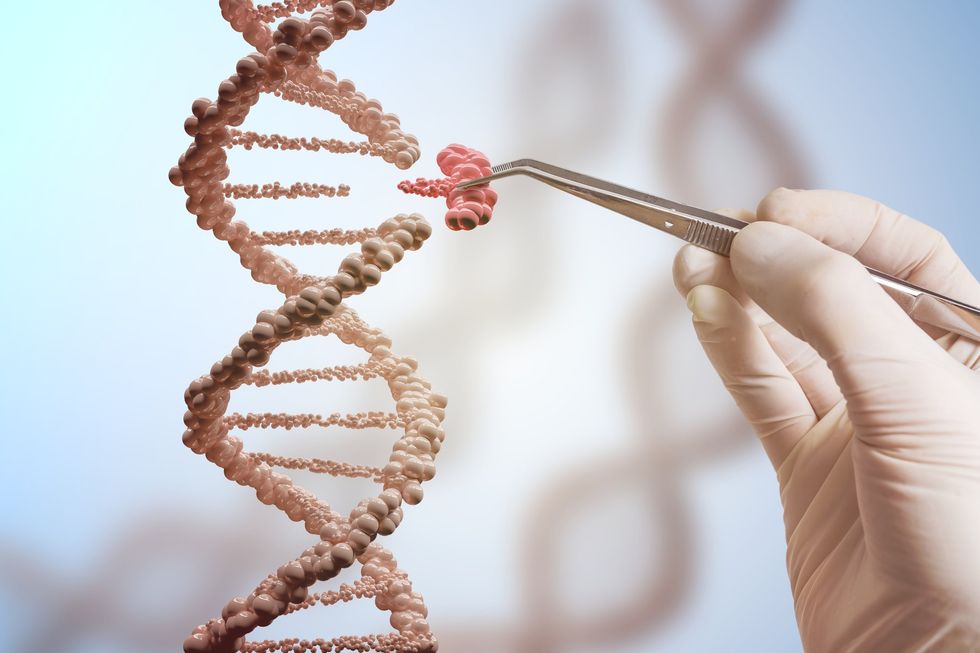Are we ready for designer babies? CRISPR gene editing is about to unleash a new eugenics revolution
What if the technology that holds the promise to cure cancer also heralds an era of “designer babies”? This notion isn’t merely speculative; it’s a pressing bioethical concern that demands our attention.Traditionally, the medical industry focuses on healing. Antibiotics are doled out for infections, chemotherapy and radiation remain standard cancer treatments, and over-the-counter medications offer temporary relief from ailments like the common cold. This reactive approach implies a system designed to address health issues only after they emerge rather than attempting to cure the human body of what has long been deemed ultimately incurable: mortality. Can we cautiously explore CRISPR's healing possibilities without encroaching into eugenic-like enhancement?Yet, a “transhumanist” faction movement of scientists and futurists seeks to change all that. They propose a future in which biomedical technology doesn’t just react to disease but rather actively prevents it by going to the source: the human genome. Imagine viewing the human genome as a piece of software — a system ripe for reprogramming. The role of scientists and doctors can morph into that of an engineer to modify our very DNA, eradicating diseases like cancer before they can take root. Can ending death itself be far behind?At the heart of this ambition lies CRISPR-Cas9, a revolutionary gene-editing tool hailed as the “preferred method” for genomic modification by the National Institutes of Health. According to the NIH, it has the ability to “modify the genome ... in any region.” With CRISPR, scientists can target and eliminate genetic “malware” long before it manifests into illness. vchal/Getty ImagesUsing CRISPR to alter the human genome is largely banned under international law due to its unknown and potentially species-altering consequences. If you tamper with one part of the genome, there is no way to tell what effects that will have several generations down the line. However, the illegal work of a Chinese scientist, Dr. He Jiankui, gave the world a glimpse into the practical application of CRISPR in the immediate present. Jiankui made headlines in November 2018 when he announced the birth of twin girls, Lulu and Nana, whose genomes he had edited to become resistant to HIV. His announcement ignited a global firestorm, followed by his three-year jail sentence on charges of engaging in "illegal medical practices.” However, his illegal experiment had already opened Pandora’s box: Did the world just witness the cure for AIDS? Can his experiment be applied to other deadly and terminal diseases?Despite CRISPR’s seemingly miraculous potential to cure the incurable, it also has a shadowy side. The ability to manipulate human DNA is something that the 20th-century eugenicists could only dream of, and the 21st-century transhumanists appear eager to cloak their predecessors’ ambitions in a more palatable form."Dark Aeon: Transhumanism and the War Against Humanity" author and transhumanism analyst Joe Allen explains the dual ambitions of the transhumanist movement — to heal the broken and to “enhance” the human species into becoming stronger, smarter, and more beautiful through technology like CRISPR:There are two objectives [regarding the transhumanists] — healing and enhancement. The first step is healing. They seek to genetically engineer new therapies, such as mRNA "cures" and CRISPR gene therapies, to overcome suffering. Applications include everything from eliminating HIV and malaria to Tay-Sachs and cancer. The next step is enhancement. The dream is to engineer smarter, stronger, more beautiful human beings, whether after birth, or before birth through targeted germline mutations (sperm, ova, or zygotes). The latter creates a semi-permanent mutated bloodline. Allen references Nicholas Agar’s term “liberal eugenics” or “soft eugenics” to describe the transhumanist’s aims with CRISPR. He explains, “Rather than a totalitarian state enforcing genetic hygiene on the population, consumers in a free market will increasingly choose to "upgrade" their own biological abilities, and those of their children.”If this seems like a fringe movement, recent surveys from Pew, Cambridge, and Harvard indicate otherwise: Around a third of Americans are comfortable with the eugenics-like enhancement of tampering with the human genome to optimize for strength, intelligence, and beauty. As Allen poignantly concludes, “The idea is no longer radical.”Several key bioethical questions will grow both in importance and pertinence as resistance to this technology is broken down. The first concern is socio-economic: Will the current divide between the elites and “the rest of us” take on a genetic dimension? Allen describes this danger as the emergence of “a genetic elite — Humanity 2.0 — that exploits or displaces Humanity 1.0.” In a Huxleyan-like fashion, those who can afford to transform their germline into “alpha-plusses” will be perched on top


What if the technology that holds the promise to cure cancer also heralds an era of “designer babies”? This notion isn’t merely speculative; it’s a pressing bioethical concern that demands our attention.
Traditionally, the medical industry focuses on healing. Antibiotics are doled out for infections, chemotherapy and radiation remain standard cancer treatments, and over-the-counter medications offer temporary relief from ailments like the common cold. This reactive approach implies a system designed to address health issues only after they emerge rather than attempting to cure the human body of what has long been deemed ultimately incurable: mortality.
Can we cautiously explore CRISPR's healing possibilities without encroaching into eugenic-like enhancement?
Yet, a “transhumanist” faction movement of scientists and futurists seeks to change all that. They propose a future in which biomedical technology doesn’t just react to disease but rather actively prevents it by going to the source: the human genome. Imagine viewing the human genome as a piece of software — a system ripe for reprogramming. The role of scientists and doctors can morph into that of an engineer to modify our very DNA, eradicating diseases like cancer before they can take root. Can ending death itself be far behind?
At the heart of this ambition lies CRISPR-Cas9, a revolutionary gene-editing tool hailed as the “preferred method” for genomic modification by the National Institutes of Health. According to the NIH, it has the ability to “modify the genome ... in any region.” With CRISPR, scientists can target and eliminate genetic “malware” long before it manifests into illness.
 vchal/Getty Images
vchal/Getty Images
Using CRISPR to alter the human genome is largely banned under international law due to its unknown and potentially species-altering consequences. If you tamper with one part of the genome, there is no way to tell what effects that will have several generations down the line. However, the illegal work of a Chinese scientist, Dr. He Jiankui, gave the world a glimpse into the practical application of CRISPR in the immediate present.
Jiankui made headlines in November 2018 when he announced the birth of twin girls, Lulu and Nana, whose genomes he had edited to become resistant to HIV. His announcement ignited a global firestorm, followed by his three-year jail sentence on charges of engaging in "illegal medical practices.” However, his illegal experiment had already opened Pandora’s box: Did the world just witness the cure for AIDS? Can his experiment be applied to other deadly and terminal diseases?
Despite CRISPR’s seemingly miraculous potential to cure the incurable, it also has a shadowy side. The ability to manipulate human DNA is something that the 20th-century eugenicists could only dream of, and the 21st-century transhumanists appear eager to cloak their predecessors’ ambitions in a more palatable form.
"Dark Aeon: Transhumanism and the War Against Humanity" author and transhumanism analyst Joe Allen explains the dual ambitions of the transhumanist movement — to heal the broken and to “enhance” the human species into becoming stronger, smarter, and more beautiful through technology like CRISPR:
There are two objectives [regarding the transhumanists] — healing and enhancement. The first step is healing. They seek to genetically engineer new therapies, such as mRNA "cures" and CRISPR gene therapies, to overcome suffering. Applications include everything from eliminating HIV and malaria to Tay-Sachs and cancer. The next step is enhancement. The dream is to engineer smarter, stronger, more beautiful human beings, whether after birth, or before birth through targeted germline mutations (sperm, ova, or zygotes). The latter creates a semi-permanent mutated bloodline.
Allen references Nicholas Agar’s term “liberal eugenics” or “soft eugenics” to describe the transhumanist’s aims with CRISPR. He explains, “Rather than a totalitarian state enforcing genetic hygiene on the population, consumers in a free market will increasingly choose to "upgrade" their own biological abilities, and those of their children.”
If this seems like a fringe movement, recent surveys from Pew, Cambridge, and Harvard indicate otherwise: Around a third of Americans are comfortable with the eugenics-like enhancement of tampering with the human genome to optimize for strength, intelligence, and beauty. As Allen poignantly concludes, “The idea is no longer radical.”
Several key bioethical questions will grow both in importance and pertinence as resistance to this technology is broken down. The first concern is socio-economic: Will the current divide between the elites and “the rest of us” take on a genetic dimension? Allen describes this danger as the emergence of “a genetic elite — Humanity 2.0 — that exploits or displaces Humanity 1.0.” In a Huxleyan-like fashion, those who can afford to transform their germline into “alpha-plusses” will be perched on top of the unfortunate “gammas and epsilons.”
Another concern is if the opposite takes shape: if our genetic tampering backfires. If, as Allen describes, “a critical mass of the population is genetically altered, but rather than becoming superhumans, they become a stylized breed of warped, dysgenic mutants,” then we, playing God, very well could become the instrument of our demise.
Technology is always served on a razor’s edge. On one side is the possibility for unbelievable good and progress. On the other hand, there is the possibility of incredible and often unforeseeable damage. Can its good be harnessed without falling into its shadowy side? Can we cautiously explore CRISPR's healing possibilities without encroaching into eugenics-like enhancement? Unfortunately, history has proven that technology’s promise is served hand-in-hand with its dangers. We shouldn’t be too quick to open Pandora’s box, expecting CRISPR’s healing potential only to find the transhumanists’ hand extended to us instead — or irreversible damage to the human genome altogether.
Originally Published at Daily Wire, World Net Daily, or The Blaze
What's Your Reaction?
































































































